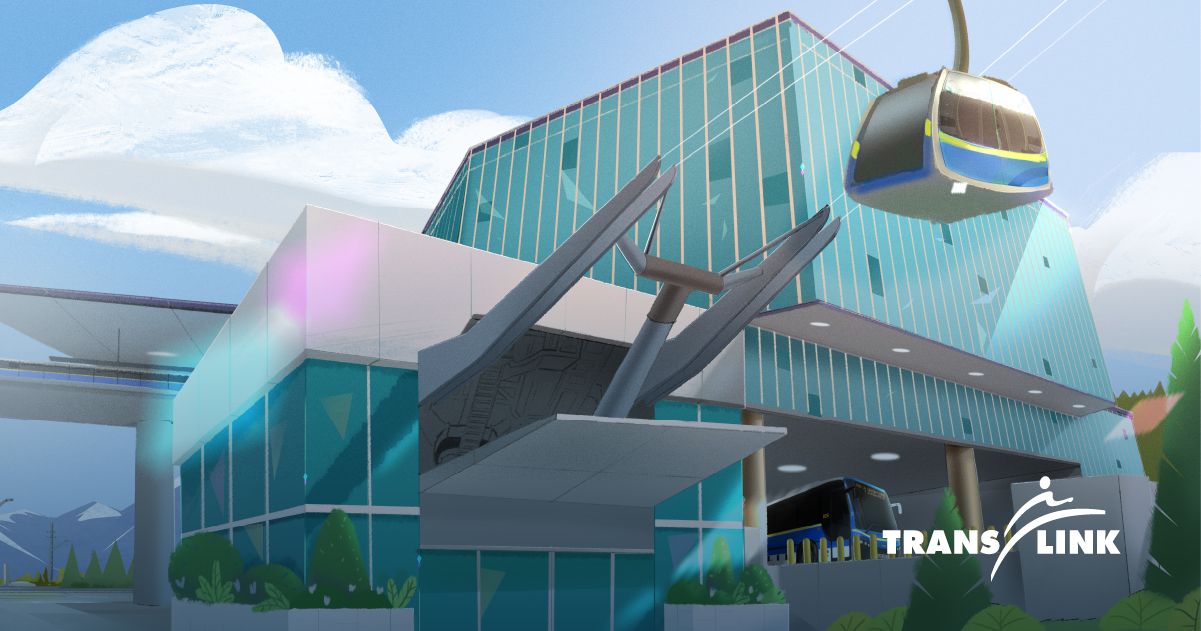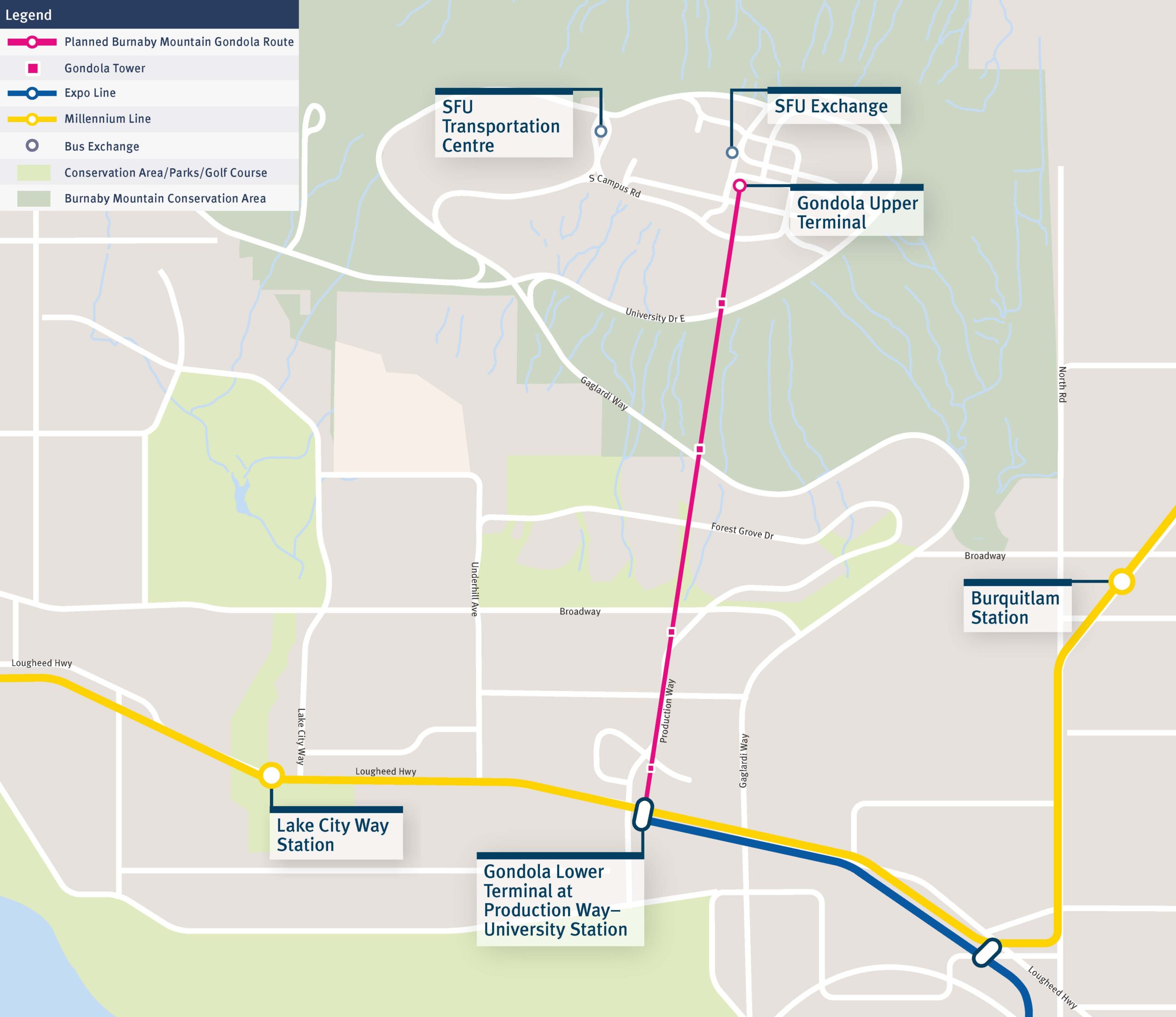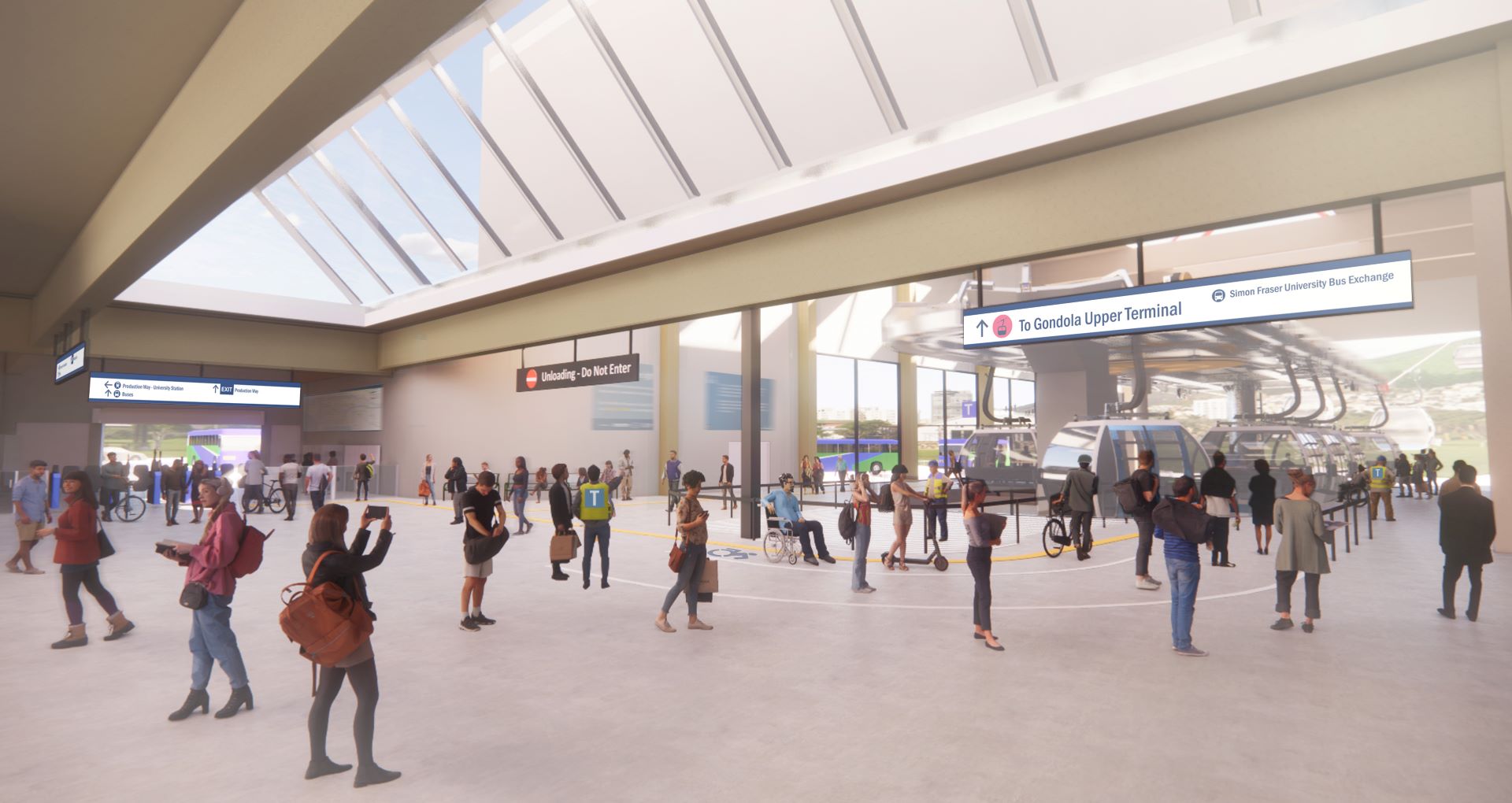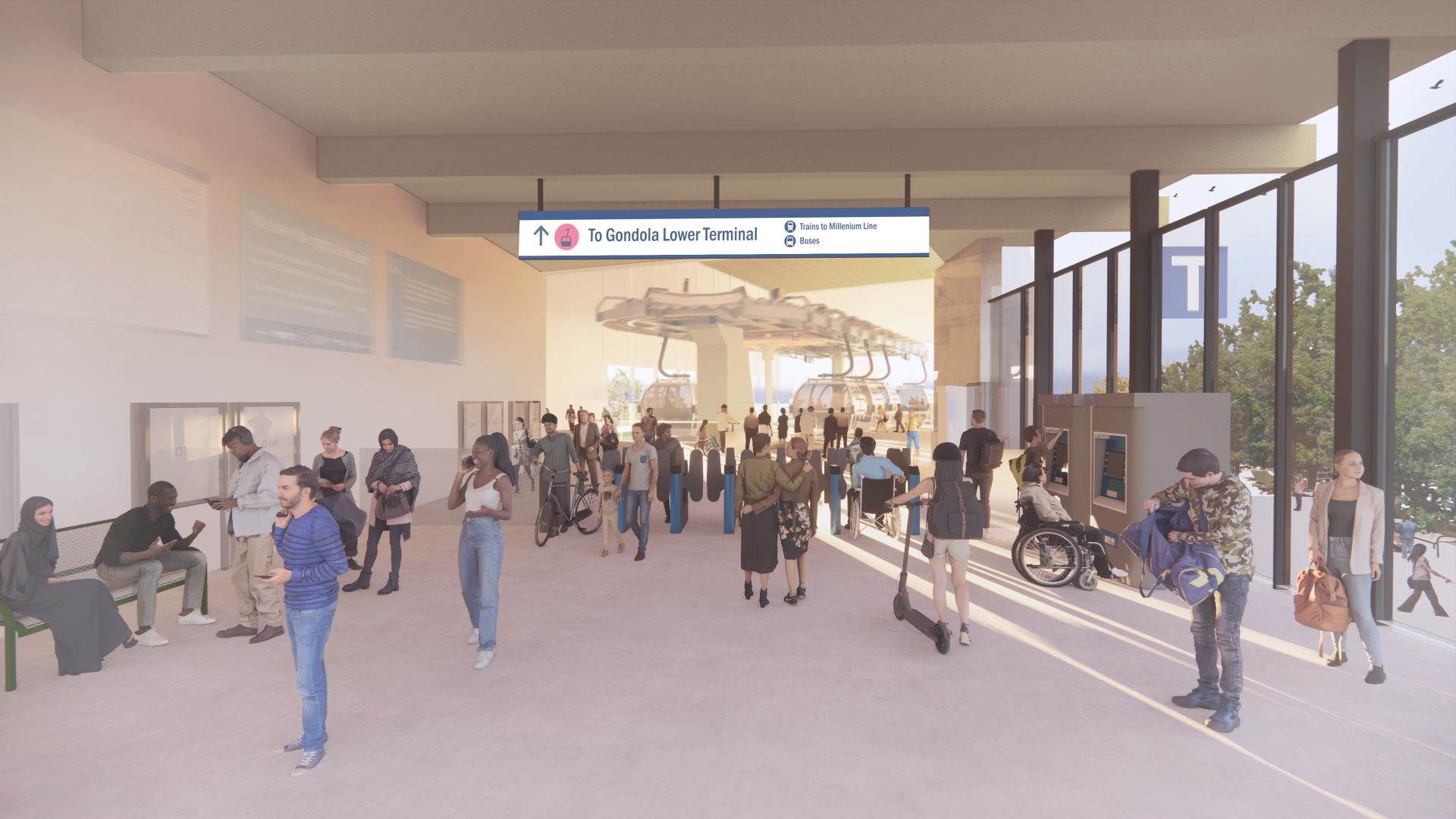
Cities
Burnaby: Cable car plans nearing completion
The plans for a cable car in the city of Burnaby near Vancouver are nearing completion. A 3S cable car with a capacity of up to 4,000 people per hour is set to transport students and commuters between the city and the campus in six minutes.
Initial situation
With 20,000 students, faculty, and staff during the day and a population of 8,000 people in the residential neighbourhood of UniverCity, the Burnaby Mountain campus east of Vancouver is a highly frequented part of the city of Burnaby.
As its name suggests, the campus is located on a mountain, while the city with its public transportation (including the SkyTrain) is situated in the valley. To reach the university and the residential area, people have to use buses. These buses record more than 25,000 trips daily to/from Burnaby Mountain.
The plan:
The cable car connects the valley and mountain in the city of Burnaby with just four supports.

Problems with Buses
Many passengers often have to wait for multiple full buses before they can board. A bus ride that is planned to take 15 minutes usually takes more than half an hour factoring in wait times.
Additionally, the diesel-hyrbid buses struggle to handle the nearly 300-meter vertical ascent. It is estimated that 6,000 tons of greenhouse gases are emitted annually from bus and auto trips to/from Burnaby Mountain.
Moreover, winter snowstorms halt bus operations every year, disrupting classes, exams, and research at SFU, as well as the daily lives of UniverCity residents. These challenges are expected to grow in the coming years, with the student population increasing to 30,000 and residents to 10,000.
Cable car as a solution
The first feasibility studies for the ”cable car” alternative were conducted in 2009. They found that a cable car would improve travel time, service frequency, and reliability compared to the current diesel bus system and significantly reduce greenhouse gas emissions.
Based on these results, the South Coast British Columbia Transportation Authority (TransLink) evaluated the construction and operation of a possible cable car starting in 2011. Plans became more concrete between 2020 and 2021, and an economic operation was developed between 2022 and 2024.
Stakeholders and the public were continuously involved, and studies showed strong support for the cable car. As Holly Foxcroft, TransLink‘s Lead Planner for the Burnaby Mountain Gondola, recently reported at the World Cable Car Congress OITAF 2024, the project may be considered in as a candidate project in a future capital plan.
At the time of writing it remains an unfunded project.
Rendering of the valley station

Concrete procedure
As mentioned, TransLink constantly coordinates the state of the plans with partners and stakeholders, with significant relevance given to protecting the environment, the neighborhood, and the archaeological heritage of Indigenous people.
”Of course, the project‘s economic viability – including operating and maintenance costs – and integrating the facility into the transportation network also play a major role. For example, the cable car would integrate into the SkyTrain network and provide service which matches demand. The hours of operation are still under review,” emphasizes Foxcroft.
Rendering of the mountain station

Current status
Some technical details are already determined. A 3S gondola lift would be used, with two stations and four towers planned. The valley station with a cabin garage would be built next to the Production Way-University SkyTrain station.
The SkyTrain is the driverless, rail-based public transit system in the Metro Vancouver region. The mountain station would be near SFU‘s Town Square, on the east side of the university campus. Staff would be present at the stations to assist passengers with boarding and alighting.
”The other components can still be refined in future design phases,” emphasizes Foxcroft. This includes the capacity, which is expected to initially be 3,000 people per hour in each direction and expand to around 4,000 people in the final stage – corresponding to the number of cabins from 21 to 37.
The travel time of six minutes and the speed of six to eight meters per second can also change slightly. ”In the stations, the cabins travel at only 0.18 meters per second and can even stop completely if necessary to facilitate boarding and alighting,” says Foxcroft. The cabins would have a capacity of about 33 people.
Technical data:
Burnaby Mountain Gondola
| System specifications | 3S cable car |
| Length | 2.7 km |
| Vertical rise | 300 m |
| Travel speed | 8 m/s |
| Travel time | approx. 6 min |
| Capacity | 3.000 – 4.000 P/h |
| Cabins | 21 – 37 |
| Towers | 4 |
| Stations | 2 |
Advantages of the 3S cable car
According to Foxcroft, the benefits of the cable car are manifold. It offers a direct connection between the SkyTrain – the central rapid transit system of the region – and the university on Burnaby Mountain.
Additionally, a 3S gondola lift is highly reliable and can handle high passenger volumes and adverse weather conditions. ”We have enough capacity with the system to meet the growing demand for the next 30 years,” emphasizes Foxcroft.
Cost-effectiveness is another factor: The cable car would incur lower annual operating costs than the current bus service. The environmental aspect is also relevant, as a cable car emits less CO2 than a bus – not to mention fine particulate matter.
”Last but not least, the cable car improves passenger satisfaction with shorter travel times and more comfortable transport than the bus,” concludes Foxcroft.







